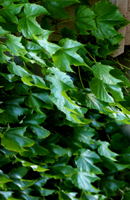 |
|
|||||||||
| Chicago's
Ivy League
A little-known and short-lived campus tradition lies at the root of the University of Chicago’s ivy. The campus ivy didn’t just start climbing on its own. Ivy exercises—ceremonies accompanying ivy-planting—were held during the University’s Junior College Day from the late 1800s until the early 1900s, when such ceremonies peaked at schools nationwide. Chicago’s ivy tradition was forgotten until this June when a Junior Ivy Day stone—a limestone slab engraved, “Junior Day Ivy, 1907, 16th Anniversary” —was unearthed near Stuart Hall during the quad utilities project. The discovery led archivists to dig deeper into Chicago’s ivy. In their heyday Junior College Days were morning-till-night events involving athletics, plays, a prom, and ivy exercises, during which shoots were planted next to buildings including Bartlett, Haskell, and Walker. Women and men of the Junior College participated in the ivy spade presentation, served on the ivy committee, and performed music at the exercises. As the years wore on, the exercises grew shorter and earlier in the day until they disappeared around 1910. The July 1909 Magazine reported ivy exercises that June; but the 1911 yearbook, the Cap and Gown, made no mention of ivy, noting, however, that the Junior Prom had been replaced in 1910 by the Interclass Hop, which the author considered “more hospitable and democratic than the older arrangement.” It may have been that Chicago, like many of its peers, abandoned ivy traditions because of the damage the vine was thought to cause. As early as 1877, the Harvard Crimson noted, “When it was discovered that the ivy…served only as a bait to the white ants, ruthless hands were ready to tear down the offending vine, and no one seemed to mind the sacrilege. It would be very foolish now to revive ivy planting...” Ivy-planting traditions remained popular at many colleges after Harvard’s ended; some continue to this day. And as University Planner Richard Bumstead points out, ivy doesn’t damage stone walls or mortar, though it harms wooden windows; in fact, ivy shields buildings from the sun, reducing air-conditioning costs. The Collegiate Gothic style of architecture dominated campus construction in the era of ivy traditions; both were part of American schools’ attempt to resemble Oxford and Cambridge. Chicago was no exception: its first building, Cobb Lecture Hall (1892), is Collegiate Gothic. Chicago’s ivy added instant tradition to its harsh, Gothic-style structures. The rise and fall of Chicago’s ivy exercises may reveal an institutional ambivalence toward other colleges’ non-academic traditions. Indeed, there is much to be said for not swallowing ivy days whole; on Ascension Day at Oxford, a college there traditionally serves up ground-ivy beer.
|
|
Contact
|

